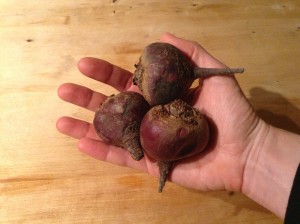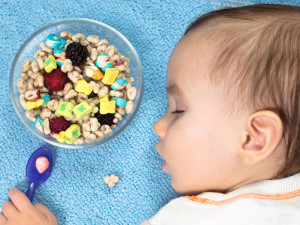It’s Less Work than You Think (Healthy Snacks)
/When I’m introducing my concept of 5-6 equal opportunities to eat to Moms and Dads many think that it sounds impossible – it’s too much work. But I promise you it’s not. In fact, it’s likely the same amount of work that you’re currently doing. But it’s work that’s moving you in the right direction of getting your picky eater to try new foods (instead of inadvertently fuelling pickier eating).
But I think I’m getting ahead of myself here. First let me explain what I mean by 5-6 equal opportunities to eat.
Toddlers and preschoolers have little tummies, short attention spans, and big nutrition needs. That’s why they need more than just 3 meals a day. I’ve found that most kids so best with three meals plus two or three snacks per day.
When I say the word “meal”, you likely imagine something with healthy foods from multiple food groups, perhaps eaten while sitting at a table. In contrast, when I say the word “snack” you likely think of something small to eat, perhaps less healthy foods, grabbed and eaten on the run.
Most toddlers and preschoolers don’t have appetites that are bigger at “meal” times and smaller at “snack” times. Instead of differentiating between “meals” and “snacks”, I recommend treating these as all as “opportunities to eat”.
So, instead of giving your child 3 meals plus 2 – 3 snacks per day, I recommend re-framing the concept to offering 5 – 6 opportunities to eat each day.
But the phrase that I started with in this post had the word “equal” in it: “5 – 6 equal opportunities to eat” .
Here’s where the “equal” comes into play.
To best meet kids’ nutrition needs in the face of their short attention spans, I recommend taking each of the 5 – 6 opportunities to eat to provide kids with healthy foods. This way if they eat a lot at afternoon snack and only two bites at dinner, it’s less of a worry than if you gave your child junky foods at afternoon snack and were relying on dinner for those vegetables, fruit, and whole grains.
Consider each opportunity to eat an equal opportunity to provide healthy foods from 2 – 4 food groups. Yes, this may mean that you’re putting more thought and effort onto your child’s snacks.
However, I can’t tell you how many families I’ve worked with who are providing quick snack handouts all day long. These parents are feeding their kids almost every hour of the day. That’s a lot of work!!
Instead of putting all your time and effort into providing constant snacks, I recommend offering 5 – 6 equal opportunities to eat each day, each of which has 2 – 4 food groups.
It’s less work than you think. And, you will be more successful in helping your child get the nutrition they need and have less picky eating behaviour.
Have you been using the 5 – 6 equal opportunities to eat strategy? Have you found it to be more work? I’d love you to share your experience in the comment section below!
Get more successful picky eater tips delivered directly to your inbox when you sign up for my e-newsletter.






 Recently a parent asked me this question: “How much cow’s milk to offer toddlers. Do you allow them to regulate/drink as much as they want or just fill the cup up once and then when it's empty that's it? Being only 17 months, he can fill up pretty quick on milk during the meal, but I also don't want to be taking it away. I would prefer to just allow him to self regulate, but not sure what to do once the sippy cup is empty.”
Recently a parent asked me this question: “How much cow’s milk to offer toddlers. Do you allow them to regulate/drink as much as they want or just fill the cup up once and then when it's empty that's it? Being only 17 months, he can fill up pretty quick on milk during the meal, but I also don't want to be taking it away. I would prefer to just allow him to self regulate, but not sure what to do once the sippy cup is empty.”

 It happened again yesterday. I was leading a workshop and a parent asked me: “Is it wrong to give my child smoothies with veggies in them? Is this considered hiding veggies?” Rarely a workshop goes by without a parent asking me about smoothies for their picky eater kids. They’re such a popular trend these days. While I touched on this in last week’s blog post; it’s such a common question that I get about healthy snacks for kids that I thought that it was worthwhile to expand on it today. And, share some ideas for smoothie ingredients.
It happened again yesterday. I was leading a workshop and a parent asked me: “Is it wrong to give my child smoothies with veggies in them? Is this considered hiding veggies?” Rarely a workshop goes by without a parent asking me about smoothies for their picky eater kids. They’re such a popular trend these days. While I touched on this in last week’s blog post; it’s such a common question that I get about healthy snacks for kids that I thought that it was worthwhile to expand on it today. And, share some ideas for smoothie ingredients. You’ve probably heard that it’s great to get your kids to help you in the kitchen to learn cooking skills, instill healthy eating habits, and more.
You’ve probably heard that it’s great to get your kids to help you in the kitchen to learn cooking skills, instill healthy eating habits, and more. Kids begging for food while you're cooking. Do you experience this common situation? You rush home from work and daycare pick-up, drop your bag and coat, and immediately get to work in the kitchen making dinner (or should I say figuring out what’s for dinner and then making it?). As you’re cooking, your little one suddenly is famished. They’re underfoot, claiming that they’re “staaaarrrvvving” and begging you for something to eat. Saying that they couldn’t possibly wait the 10 minutes until dinner is ready.
Kids begging for food while you're cooking. Do you experience this common situation? You rush home from work and daycare pick-up, drop your bag and coat, and immediately get to work in the kitchen making dinner (or should I say figuring out what’s for dinner and then making it?). As you’re cooking, your little one suddenly is famished. They’re underfoot, claiming that they’re “staaaarrrvvving” and begging you for something to eat. Saying that they couldn’t possibly wait the 10 minutes until dinner is ready. {Guest Post at
{Guest Post at  Aah, beets. These versatile root veggies are one of my favourites! As a dietitian, part of my job is to know how to prepare healthy foods like beets. So I’m sharing a couple of my favourite ways to use them. A classic storage, root veggie, you can find local ones (fairly cheap) throughout the winter here in Victoria, BC.
Aah, beets. These versatile root veggies are one of my favourites! As a dietitian, part of my job is to know how to prepare healthy foods like beets. So I’m sharing a couple of my favourite ways to use them. A classic storage, root veggie, you can find local ones (fairly cheap) throughout the winter here in Victoria, BC. Hallowe’en is a fun and exciting holiday for kids. And, while as a parent you may not love the idea of all that Halloween candy, the last thing that you want to add to an already hectic day is a battle over food.
Here’s some ideas about how to handle all that Halloween candy.
Hallowe’en is a fun and exciting holiday for kids. And, while as a parent you may not love the idea of all that Halloween candy, the last thing that you want to add to an already hectic day is a battle over food.
Here’s some ideas about how to handle all that Halloween candy. Could What I’m Feeding my Toddler be Keeping them Awake?
I'm often asked by parents about what foods are best at bedtime. And, if there's anything they shouldn't feed their kids before bed. There’s a lot of old wives tales and urban myths about foods and food ingredients either helping or hindering sleep, thus keeping toddlers awake. However, there isn’t strong evidence connecting specific foods and sleep –either preventing sleep or causing kids to fall asleep (and stay asleep).
Could What I’m Feeding my Toddler be Keeping them Awake?
I'm often asked by parents about what foods are best at bedtime. And, if there's anything they shouldn't feed their kids before bed. There’s a lot of old wives tales and urban myths about foods and food ingredients either helping or hindering sleep, thus keeping toddlers awake. However, there isn’t strong evidence connecting specific foods and sleep –either preventing sleep or causing kids to fall asleep (and stay asleep). Thank you to the parent who asked me this week’s question: "My baby doesn’t have any teeth yet. Can I give her finger foods?" The short answer is: yes!
You don’t need to wait until a baby has teeth before giving finger foods.
Thank you to the parent who asked me this week’s question: "My baby doesn’t have any teeth yet. Can I give her finger foods?" The short answer is: yes!
You don’t need to wait until a baby has teeth before giving finger foods.
 A big thank you to the parent who shared this question: "How much is enough food for my baby? Tonight I thought I would give in and see how it went. He polished off…….
While she was specifically talking about how much food to provide at bedtime snack, I’m asked this question a lot, in fact I’m asked it at almost every workshop.
A big thank you to the parent who shared this question: "How much is enough food for my baby? Tonight I thought I would give in and see how it went. He polished off…….
While she was specifically talking about how much food to provide at bedtime snack, I’m asked this question a lot, in fact I’m asked it at almost every workshop.

